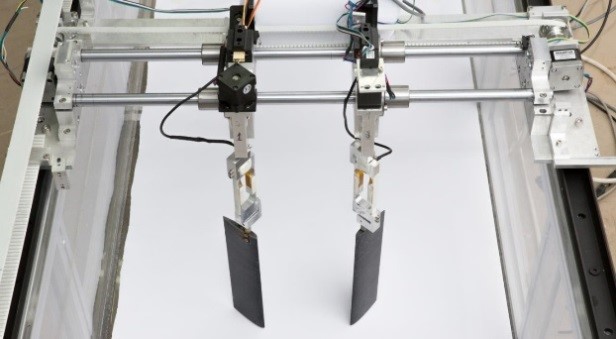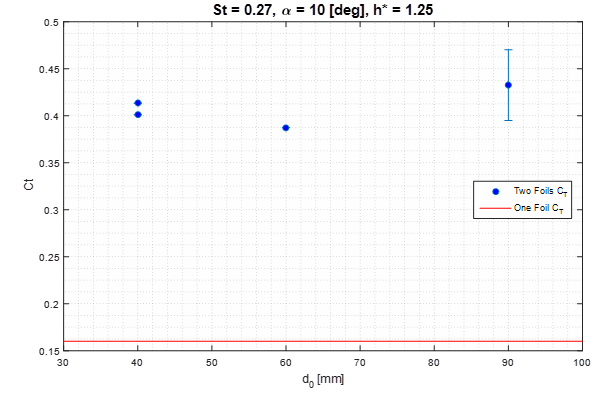Double tail thrusters for aquatic locomotion
Prof. Daniel Weihs & Guy Kagan, Technion - Israel Institute of Technology, Israel
Many marine animals use body and tail fin oscillations to create the thrust force required for motion. Studies have shown that propulsion systems based on an oscillating foil have efficiencies equal to or better than screw propellers, both for forward motion and maneuvering.
Propulsion systems using oscillating foils have additional advantages over screw propeller propulsion systems. For example, when moving in shallow water and in an environment of vegetation and obstacles. Further, it takes full advantage of its surface for thrust, in contrast to the screw propeller. The typical reduction in efficiency in propeller systems due to cavitation is not encountered when using foils.
One problem is that periodic side forces are produced by a single foil, so we designed a double-tail system with two parallel identical foils (Fig 1). When moving in antiphase they average out the side forces, and when placed close enough add a jetting phenomenon, to increase thrust.
We present a theoretical analysis and experimental system, producing thrust forces that are up to 20% higher than two separate foils, both for moving systems ( as for vessels) and static work ( working as a pump).

Fig 1 . The dual tail experimental

Fig 2. Typical thrust results system